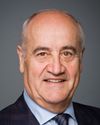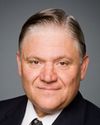Thank you very much for that.
As you know, Mr. Semianiw, I asked this question last time you were here, along with the deputy minister, about the Canada pension disability clawback or benefit reduction. As you know, if you are 50 years old and you are seriously injured from the military or the RCMP and you are permanently disabled where you can no longer work, you can apply for Canada pension disability. If you have, say, 25 or 30 years in, you also get a portion of your superannuation. However, if you apply for CPP disability and receive it, that CPP disability at 50 is clawed back from your superannuation which, by the way, upsets an awful lot of people out there.
I had asked the last time if it was possible that the department could look at this and come back with any kind of a response. I haven't received that yet so I'll leave that with you again. Perhaps it's possible to get a written response of what the government plans to do, not about the CPP clawback at 65, but the CPP disability clawback which affects everyone in the federal public service, mind you, but it's specifically RCMP and military veterans.
There are two other things I have for you before you go.
The national monument is a beautiful piece that's out there. It's just gorgeous. I'm not a wordsmith to describe how beautiful it is, but it is missing something very important. If you served in the Boer War, Bosnia, or any other conflict of war of that nature, you're not there. They have World War I, World War II, and Korea.
I suggested a while back the words “in the service of Canada” be imprinted on that monument in order to reflect every single person in the past, currently, and in the future. You can't have every battle and conflict on there—I understand that—but if the words “in the service of Canada” or something of that nature were there, then the modern-day veterans, those who served in other areas like Bosnia, Cyprus, etc., would feel more inclusive towards that. I personally believe this because this is what they've told me.
I'll just leave that with you. If you'd like to respond, go ahead.





